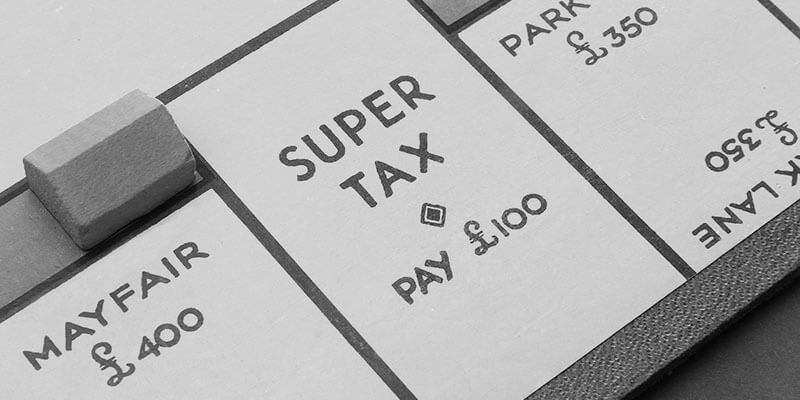2018/19 tax changes

New initiatives you need to know
It’s important to consider the tax implications of making financial decisions. The 2018/19 tax year is now upon us, and a raft of new changes have come into force. The good news is that the overall tax burden is little changed for basic-rate taxpayers, but there are number of areas that have changed that should be taken note of.
Here’s what you need to know about the 2018/19 tax year changes and new initiatives.
Personal Allowance
The tax-free Personal Allowance is the amount of income you can earn before you have to start paying Income Tax. All individuals are entitled to the same Personal Allowance, regardless of their date of birth.
In the 2017/18 tax year, the Personal Allowance was £11,500, and it rises to £11,850 in the 2018/19 tax year. This means you can earn £350 more in the 2018/19 tax year than in the previous tax year before you start paying Income Tax. However, bear in mind that the Personal Allowance is restricted by £1 for every £2 of an individual’s adjusted net income above £100,000.
A spouse or registered civil partner who isn’t liable to Income Tax above the basic rate may transfer £1,185 of their unused Personal Allowance in the 2018/19 tax year, compared to £1,150 in the 2017/18 tax year to their spouse or registered civil partner, as long as the recipient isn’t liable to Income Tax above the basic rate.
Higher-rate threshold
The threshold for people paying the higher rate of Income Tax (which is 40%) increased from £45,000 to £46,350 in the 2018/19 tax year. This new figure also includes the increased Personal Allowance.
Dividend Allowance
The Chancellor of the Exchequer, Philip Hammond, announced in the Spring Budget 2017 that the Dividend Allowance would reduce from £5,000 to £2,000 from 5 April 2018.
Any dividend income that investors earn above the £2,000 allowance will attract tax at 7.5% for basic-rate taxpayers, while higher-rate taxpayers will be taxed at 32.5% and additional-rate taxpayers at 38.1%.
This may impact on shareholders of private companies paying themselves in the form of dividends, for example, rather than salary. Investors with portfolios that produce an income in the form of dividends of more than £2,000 a year, which are held outside ISA or pensions, will also be affected by the reduction in the allowance.
Auto enrolment contributions
Auto enrolment contribution rates have increased for employees and employers. In the previous 2017/18 tax year, the minimum pension contribution rate was 1% from the employee and 1% from the employer, which provides a 2% contribution. However, from 6 April 2018, the contribution rate increased to 3% for employees and 2% from the employer, totalling 5%.
Pension Lifetime Allowance
The Lifetime Allowance increased from £1 million to £1.03 million in the 2018/19 tax year. This is the maximum total amount you can hold within all your pension savings without having to pay extra tax when you withdraw money from them.
If the total value of your pension savings goes over the Lifetime Allowance, any excess will be taxed at a rate of 25% in addition to your marginal rate of Income Tax if drawn as income, or 55% if you take it as a lump sum.
State Pension
There has been a 3% rise for the old basic State Pension and the new flat-rate State Pension. If you’re on the basic State Pension (previously £122.30 per week), this has increased to £125.95. The flat-rate State Pension has increased from £159.55 to £164.35 a week.
Inheritance Tax
The residence nil-rate band (RNRB) has risen from £100,000 to £125,000. The RNRB enables eligible people to pass on a property to direct descendants and potentially save on death duties.
Capital Gains Tax
Capital Gains Tax is charged on profits that are made when certain assets are either transferred or sold. There’s no tax to pay if all gains made in a tax year fall within the annual Capital Gains Tax allowance. For the 2018/19 tax year, this will be £11,700 (it was £11,300 for the 2017/18 tax year).
Buy-to-let landlords
Changes mean that only 50% of mortgage interest will be able to be offset when calculating a tax bill, compared with 75% previously.
Need help navigating the tax maze?
Remember that tax rules and allowances can and do change over time. Their effect on you depends on your individual circumstances, which can also change. We’ll help you to optimise your tax position. For a review of your position, contact 01403 333145 or email areeves@reevesfinancial.co.uk for further information or arrange a meeting.
This is for your general information and use only and is not intended to address your particular requirements. The content should not be relied upon in its entirety and shall not be deemed to be, or constitute, advice. Although endeavours have been made to provide accurate and timely information, there can be no guarantee that such information is accurate as of the date it is received or that it will continue to be accurate in the future. No individual or company should act upon such information without receiving appropriate professional advice after a thorough examination of their particular situation. For Reeves Financial, published by Goldmine Media Limited, Basepoint Innovation Centre, 110 Butterfield, Great Marlings, Luton, Bedfordshire LU2 8DL Content copyright protected by Goldmine Media Limited 2017. Unauthorised duplication or distribution is strictly forbidden.

Author: Adam Reeves
DipPFS Cert CII (MP&ER)
Independent Financial Planner, Wealth Manager, Director
Last updated on


